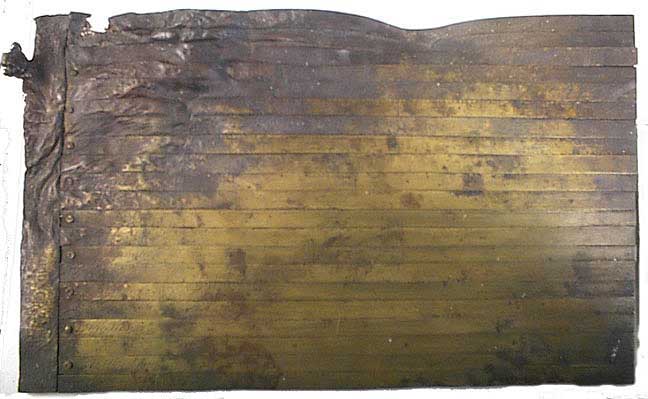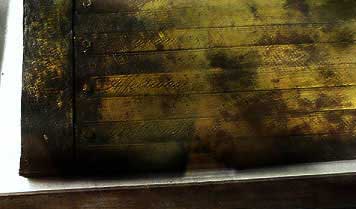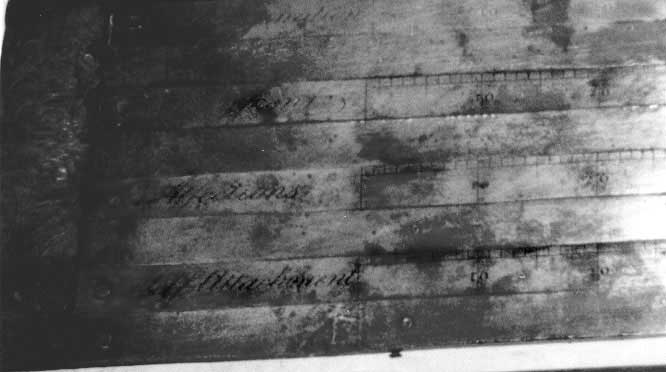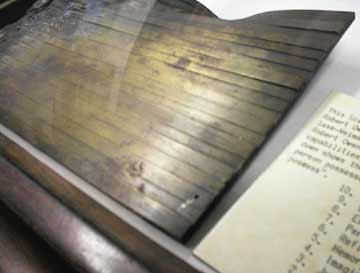
Today it is common to encounter scales asking us to reveal our attitudes and qualities. These scales are a means of translating psychological concepts into numbers. It is surprising to realize that this system has not always been around.
The first known rating of psychological variables was by Christian Thomasius (http://www.indiana.edu/~intell/thomasius.html), in about 1692. Using a 12 point scale individuals were rated on
The rating scale, however, didn't quite catch on. (By the way, it was Thomasius who began teaching his classes in the students' native tongue rather than in Latin. Apparently it caused quite a controversy. He also wrote against using torture to evoke confessions. I don't know about you, but I see a common theme.)
Background.
The next identified use of psychological rating scales was about 1826 attributed to Robert Owen (http://www.spartacus.schoolnet.co.uk/IRowen.htm or visit Robert Owen Museum biography http://www.midwales.com/peopleplaces/rowen/index.html). An industrialist from Scotland (born in Wales), he had been widely criticized for refusing to hire children under the age of 10 to work in his mills and for educating them instead.
Owen, tired of the bad press, purchased the town of New Harmony, Indiana, with the idea of building a utopia (http://www.sil.si.edu/exhibits/smithson/labels/042_high.html). Many notable scientists and educators of the era moved to New Harmony and advanced education was freely available. His ideas on education were published in "A New View of Society" (http://www.yale.edu/lawweb/avalon/econ/owenm.htm)
Although the scale is attributed to Robert Owen in one source (Bernhard, 1828), I wonder if Joseph Neef (http://cedar.evansville.edu/~ck6/bstud/neef.html), the superintendent of the New Harmony school, may be a more likely source. His major work, written 17 years before his New Harmony experience, is subtitled, "An analysis of the human faculties." (This text, "Sketch of A Plan and Method of Education" is the first book written in English in America on educational method. Although he discusses observation in detail, he does not mention any scale.)
The Rating Scale.
Children were apparently shown their ratings or "capabilities" on 10 characteristics using a 100 point scale. The children were later to make self- ratings of their progress using the same scale. Apparently the ratings were of current achievement on the "faculties," as opposed to potential abilities. The 10 ratings (no definitions or anchor points are provided) were of:
How would you rate yourself on these 10 items? If you try, you might wonder, what does 1 mean vs 100? I have not found any information that would clarify if a higher or lower number means more of the faculty. By convention, today most scales are designed so more is associated with higher. It is also not clear what was meant by these terms. After 175 years it is likely that their meaning has shifted.
(By the way, on the accompanying placard in the museum, the items are reverse numbered, Strength is listed as 10 but appears on the top of the scale. Self-Attachment is numbered 1 but is at the bottom. There was no explanation for this enumeration and numbers do not appear on the actual tool).
The scale can still be viewed at the Workingman's Institute Library (http://www.newharmonywmi.lib.in.us/) in New Harmony, Indiana.
It was made of brass with
sliding bars for each characteristic (see below, obviously damaged by fire at
some point.) You can see the small rivets on the left which allowed you to shift
the particular bar to the right.
The size of the image should be close to the actual size of about 7 1/2 inches by about 9 1/4 inches.
The details that remain after the fire show an item crafted with care. The font used for the items is a beautiful one. Below are two close-ups, unfortunately taken through glass. (I tried to improve them with photo-editing but my skills are at the novice level.) Nevertheless, you might be able to read the words, working up from the bottom, "Self-Attachment", "Affections", and (barely) "Judgement." You might also be able to pick out the scale on the right side of the images. Can you see the "20" and the hash marks on the "Affections" line in the black and white photo?


In the color detail photo you may notice some roughness in the band of metal going up the left side. With the actual object you can make out pieces of the words "Scale of Human."
Here is a shot from the side so you can see how the sliding rules worked:

By the way, Robert Owen's son, Robert Dale Owen (http://www.sil.si.edu/exhibits/smithson/compromise_01.html), was significant in the founding of the Smithsonian Institution, introducing the bill that organized it during his term as Representative. His other son, David Dale Owen (http://cedar.evansville.edu/~ck6/bstud/owen.html), was a leading geologist, doing the official surveys of Indiana, Kentucky, and Arkansas. Both of Owen's sons married daughters' of Neef.
I want to express my appreciation to Nancy Manchette of the Workingman's Institute Library of New Harmony, Indiana, and to their board for giving me permission to photograph this historic piece of psychology's past.
McReynolds, P. & Ludwig, K. (1987). On the history of rating scales. Personality and Individual Differences, 8(2), 281-283.
Bernhard, K. (1828). Travels
through North America during the years 1825 and 1826. Carey, Lea & Carey,
Philadelphia. as cited by McReynolds & Ludwig.
Contact the author with comments or questions about this site by following the directions at this page (which will open in a new window.)
Website created: June 1996. Page Created: Last Modified: August 13, 2000.